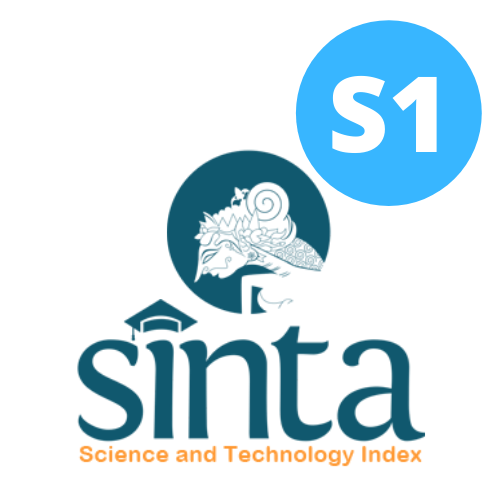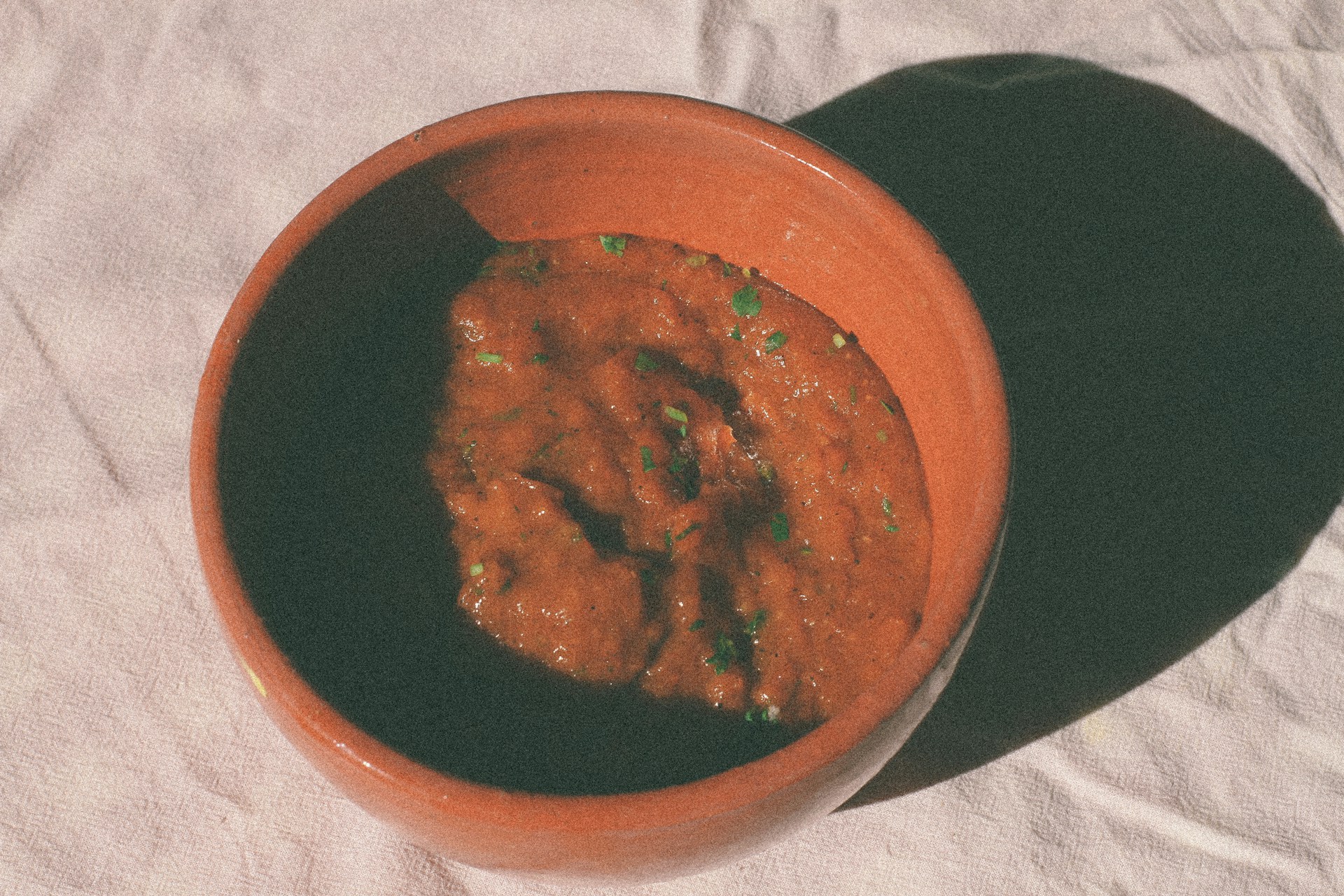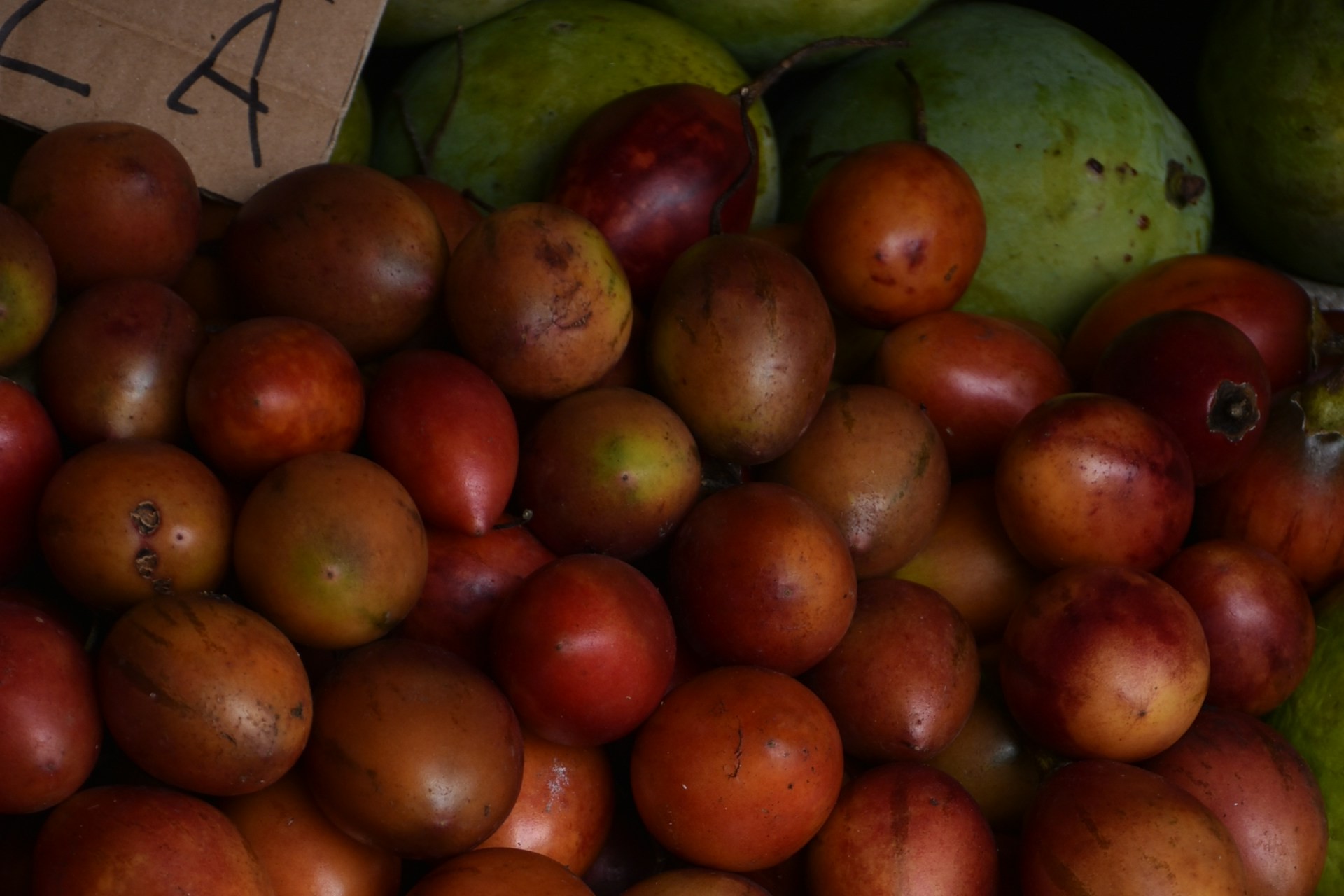Understanding Barriers to Complementary Feeding Practices in Rural Areas
Memahami Hambatan Praktik Pemberian Makanan Pendamping di Daerah Pedesaan
Background: Complementary Feeding (CF) is one of the important factors in efforts to prevent malnutrition. There is a phenomenon of stunting prevalence increasing 1.6 times at the age of 6-24 months where this phase is the phase of CF.
Objectives: Understanding the obstacles in the practice of CF in rural areas.
Methods: Cross-sectional descriptive qualitative research is used to explore the phenomenon of obstacles experienced in depth. The data collection method included in-depth interviews with mothers whose children aged 6-23 months experiencing stunting. Triangulation methods are carried out by interviewing husbands, grandmothers, and health cadres.
Results: This study provides an overview of specific barriers to CF practices, such as picky eating, the onset of allergic reactions, and the risk of choking. The practical obstacles experienced are pressure from families and the environment to provide CF prematurely, limited time to prepare CF, and financial limitations to access healthier food. Obstacles that come from mothers, such as inadequate knowledge about CF cause concern, as well as the lack of time that mothers have to make CF independently. Support also plays an important role in the success of CF that comes from families and health cadres in the form of community-based education.
Conclusions: The main obstacles to CF experienced by mothers are the lack of proper knowledge and behavior, as well as limited socio-economic support. To increase the success of the CF program, interventions that include continuing education, increased family support, and strengthening support networks at the community level are recommended.
BKPK. Survei Kesehatan Indonesia (SKI). at https://www.badankebijakan.kemkes.go.id/hasil-ski-2023/ (2023).
Kemenkes. Hasil Survei Status Gizi Indonesia. Kemenkes 154 (Kementrian Kesehatan Republik Indonesia, Jakarta, 2022).
Angood, C., Khara, T., Dolan, C., Berkley, J. A. & Group, W. T. I. Research priorities on the relationship between wasting and stunting. PLoS One 11, e0153221 (2016). https://doi.org/10.1371/journal.pone.0153221.
Limardi, S., Hasanah, D. M. & Utami, N. M. D. Dietary intake and stunting in children aged 6-23 months in rural Sumba, Indonesia. Paediatr. Indones. 62, 341–356 (2022). https://doi.org/10.1371/journal.pone.0153221.
WHO. WHO Guideline for Complementary Feeding of Infants and Young Children 6-23 Months of Age. (World Health Organization, 2023).
BPS. Survey Sosial Ekonomi Nasional (SUSENAS) 2023. Badan Pusat Statistik. Jakarta at http://sirusa.bps.go.id/webadmin/pedoman/2017_1558_ped_Buku Pedoman Pengawas.pdf (2023).
SDKI. Survey Demografi Kesehatan Indonesia Tahun 2017. (2017).
Andriani, R., Supriyatno, B. & Sjarif, D. R. Gambaran karakteristik ibu, pengetahuan, dan praktik pemberian makanan pendamping air susu ibu pada bayi di Kota Pontianak. Sari Pediatr. 22, 277–284 (2021). https://dx.doi.org/10.14238/sp22.5.2021.277-84.
Ahmad, A., Madanijah, S., Dwiriani, C. M. & Kolopaking, R. Complementary feeding practices and nutritional status of children 6–23 months old: formative study in Aceh, Indonesia. Nutr. Res. Pract. 12, 512 (2018). https://doi.org/10.4162%2Fnrp.2018.12.6.512.
Tadesse, E. Barriers to appropriate complementary feeding and the use of ultra-processed foods: A formative qualitative study from rural Oromia, Ethiopia. Matern. Child Nutr. 20, (2024). https://dx.doi.org/10.14238/sp22.5.2021.277-84.
Johnson, S. L., Moding, K. J. & Bellows, L. L. Children’s challenging eating behaviors: picky eating, food neophobia, and food selectivity. in Pediatric food preferences and eating behaviors 73–92 (Elsevier, 2018). doi:https://doi.org/10.1016/B978-0-12-811716-3.00004-X.
Burns, J. A Qualitative Analysis of Barriers and Facilitators to Optimal Breastfeeding and Complementary Feeding Practices in South Kivu, Democratic Republic of Congo. Food Nutr. Bull. 37, 119–131 (2016). https://doi.org/10.1177/0379572116637947.
Forh, G., Apprey, C. & Frimpomaa Agyapong, N. A. Nutritional knowledge and practices of mothers/caregivers and its impact on the nutritional status of children 6–59 months in Sefwi Wiawso Municipality, Western-North Region, Ghana. Heliyon 8, (2022). 10.1016/J.HELIYON.2022.E12330. https://doi.org/10.1016/j.heliyon.2022.e12330.
Zhang, X. Cultural influences on complementary feeding beliefs amongst new Chinese immigrant mothers in England: A mixed methods study. Int. J. Environ. Res. Public Health 17, 1–21 (2020). https://doi.org/10.3390/ijerph17155468.
Abebe, H. et al. Minimum acceptable diet and associated factors among children aged 6–23 months in Ethiopia. Ital. J. Pediatr. 47, (2021). https://doi.org/10.1186/s13052-021-01169-3.
Anato, A., Baye, K. & Stoecker, B. J. Suboptimal feeding practices and impaired growth among children in largely food insecure areas of north Wollo, Ethiopia. J. Nutr. Sci. 11, e81 (2022). https://doi.org/10.1017/jns.2022.79.
Traoré, F. Modelling policies to improve affordability and consumption of nutritious foods for complementary feeding in Kenya. Matern. Child Nutr. 20, (2024). https://doi.org/10.1111/mcn.13519.
Kyngäs, H. Qualitative research and content analysis. in The application of content analysis in nursing science research 3–11 (Springer, 2020). https://doi.org/10.1007/978-3-030-30199-6.
Lincoln, Y. S. & Guba, E. G. Naturalistic inquiry (vol. 75). at (1985).
Zhong, C. et al. Increased food diversity in the first year of life is inversely associated with allergic outcomes in the second year. Pediatr. Allergy Immunol. 33, e13707 (2022). https://doi.org/10.1111/pai.13707.
Correia, L., Sousa, A. R., Capitão, C. & Pedro, A. R. Complementary feeding approaches and risk of choking: A systematic review. J. Pediatr. Gastroenterol. Nutr. (2024) doi:https://doi.org/10.1002/jpn3.12298.
Muflih & Widaryanti, R. Picky Eater Dan Penanganan Dengan Strategi Kesehatan Komplementer Dan Alternatif. (Deepublish, Yogyakarta, 2023).
Cartmill, M. K. Fish and complementary feeding practices for young children: Qualitative research findings from coastal Kenya. PLoS One 17, (2022). https://doi.org/10.1371/journal.pone.0265310.
Paiva, C. S. S. de et al. Choking, gagging and complementary feeding methods in the first year of life: a randomized clinical trial. J. Pediatr. (Rio. J). 99, 574–581 (2023). https://doi.org/10.1016/j.jped.2023.05.011.
Fries, L. R., Martin, N. & van der Horst, K. Parent-child mealtime interactions associated with toddlers’ refusals of novel and familiar foods. Physiol. Behav. 176, 93–100 (2017). https://doi.org/10.1016/j.physbeh.2017.03.001.
Taylor, C. M. & Emmett, P. M. Picky eating in children: Causes and consequences. Proc. Nutr. Soc. 78, 161–169 (2019). https://doi.org/10.1017/S0029665118002586.
WHO. Stunting prevalence among children under 5 years of age (%) (model-based estimates). at https://www.who.int/data/gho/data/indicators/indicator-details/GHO/gho-jme-stunting-prevalence (2021).
Bahreynian, M. et al. Association between parental feeding practices and later body mass index in children and adolescents: The Weight disorder survey of the CASPIAN-IV Study. Med. J. Nutrition Metab. 12, 119–130 (2019). https://doi.org/10.3233/MNM-200470.
Nasrabadi, H., Nikraftar, F., Gholami, M. & Mahmoudirad, G. Effect of Family: Centered empowerment model on eating habits, weight, hemoglobin A1C, and blood glucose in iranian patients with type 2 diabetes. Evid. Based Care J. 11, 25–34 (2021). https://doi.org/10.22038/ebcj.2021.57110.2493.
Harper, K., Caulfield, L. E., Lu, S. V., Mmari, K. & Gross, S. M. Diet Quality and Contextual Factors Influencing Food Choice among Adolescents with Food Security and Food Insecurity in Baltimore City. Nutrients 14, (2022). https://doi.org/10.3390/nu14214573.
Cecília Thé Maia de Arruda Falcão, R. et al. Processed and ultra-processed foods are associated with high prevalence of inadequate selenium intake and low prevalence of vitamin B1 and zinc inadequacy in adolescents from public schools in an urban area of northeastern Brazil. PLoS One 14, (2019). https://doi.org/10.1371/journal.pone.0224984.
Cheshmeh, S. et al. The effects of breastfeeding and formula feeding on the metabolic factors and the expression level of obesity and diabetes‐predisposing genes in healthy infants. Physiol. Rep. 10, e15469 (2022). https://doi.org/10.14814/phy2.15469.
WHO. How the marketing of formula milk influences our decisions on infant feeding. at https://iris.who.int/bitstream/handle/10665/352098/9789240044609-eng.pdf?sequence=1 (2022).
Rollins, N. et al. Marketing of commercial milk formula: a system to capture parents, communities, science, and policy. Lancet 401, 486–502 (2023). https://doi.org/10.1016/S0140-6736(22)01931-6.
Aubel, J. Grandmothers—a neglected family resource for saving newborn lives. BMJ Glob. Heal. 6, e003808 (2021). http://dx.doi.org/10.1136/bmjgh-2020-003808.
Maviso, M. K., Kaforau, L. M. & Hastie, C. Influence of grandmothers on breastfeeding practices in a rural community in Papua New Guinea: A critical discourse analysis of first-time mothers’ perspectives. Women and Birth 36, e263–e269 (2023).
Kittisakmontri, K. et al. Quantity and Source of Protein during Complementary Feeding and Infant Growth: Evidence from a Population Facing Double Burden of Malnutrition. Nutrients 14, (2022). https://doi.org/10.3390/nu14193948.
Wolfson, J. A., Ramsing, R., Richardson, C. R. & Palmer, A. Barriers to healthy food access: Associations with household income and cooking behavior. Prev. Med. reports 13, 298–305 (2019). https://doi.org/10.1016/j.pmedr.2019.01.023.
Yakubu, N. & Medugu, I. I. Analysis of Quality and Quantity of Complementary Feeding and Nutrition among Children of 6 to 36 Months in Maiduguri Metropolitan Council, Borno State, Nigeria. Texila Int. J. Public Heal. 11, (2023). http://dx.doi.org/10.21522/TIJPH.2013.11.03.Art002.
Ryckman, T. Affordability of nutritious foods for complementary feeding in Eastern and Southern Africa. Nutr. Rev. 79, 35–51 (2021). https://doi.org/10.1093/nutrit/nuaa137.
Muchlis, N. et al. Cigarette smoke exposure and stunting among under-five children in rural and poor families in Indonesia. Environ. Health Insights 17, 11786302231185210 (2023). https://doi.org/10.1177/11786302231185210.
Astuti, D. D., Handayani, T. W. & Astuti, D. P. Cigarette smoke exposure and increased risks of stunting among under-five children. Clin. Epidemiol. Glob. Heal. 8, 943–948 (2020). https://doi.org/10.1016/j.cegh.2020.02.029.
Mӧrelius, E., Kling, K., Haraldsson, E. & Alehagen, S. You can’t flight, you need to fight—A qualitative study of mothers’ experiences of feeding extremely preterm infants. J. Clin. Nurs. 29, 2420–2428 (2020). https://doi.org/10.1111/jocn.1525.
Nurrizka, R. H., Wenny, D. M. & Amalia, R. Complementary Feeding Practices and Influencing Factors Among Children Under 2 Years of Age: A Cross-Sectional Study in Indonesia. Pediatr. Gastroenterol. Hepatol. Nutr. 24, 535–545 (2021). https://doi.org/10.5223/pghn.2021.24.6.535.
Haschke, F. et al. Feeding patterns during the first 2 years and health outcome. Ann. Nutr. Metab. 62, 16–25 (2013). https://doi.org/10.1159/000351575.
Kalkan, I. The impact of nutrition literacy on the food habits among young adults in turkey. Nutr. Res. Pract. 13, 352–357 (2019). https://doi.org/10.4162/nrp.2019.13.4.352.
Hässig-Wegmann, A., Román, S., Sánchez-Siles, L. & Siegrist, M. Complementary feeding challenges: Insights from Swiss parents’ perspectives. Appetite 202, 107638 (2024). https://doi.org/10.1016/j.appet.2024.107638.
Harris, H. A., Jansen, E. & Rossi, T. ‘It’s not worth the fight’: Fathers’ perceptions of family mealtime interactions, feeding practices and child eating behaviours. Appetite 150, 104642 (2020). https://doi.org/10.1016/j.appet.2020.104642.
Umugwaneza, M. Factors influencing complementary feeding practices in rural and semi-urban Rwanda: a qualitative study. J. Nutr. Sci. 10, (2021). https://doi.org/10.1017/jns.2021.37.
Widaryanti, R. & Rahmuniyati, M. E. evaluasi pasca pelatihan pemberian makan bayi dan anak (PMBA) pada kader posyandu terhadap peningkatan status gizi bayi dan balita. in Jurnal Formil (Forum Ilmiah) KesMas Respati vol. 4 163–174 (2019). https://doi.org/10.35842/formil.v4i2.273.
Copyright (c) 2025 Amerta Nutrition

This work is licensed under a Creative Commons Attribution-ShareAlike 4.0 International License.
AMERTA NUTR by Unair is licensed under a Creative Commons Attribution-ShareAlike 4.0 International License.
1. The journal allows the author to hold the copyright of the article without restrictions.
2. The journal allows the author(s) to retain publishing rights without restrictions
3. The legal formal aspect of journal publication accessibility refers to Creative Commons Attribution Share-Alike (CC BY-SA).
4. The Creative Commons Attribution Share-Alike (CC BY-SA) license allows re-distribution and re-use of a licensed work on the conditions that the creator is appropriately credited and that any derivative work is made available under "the same, similar or a compatible license”. Other than the conditions mentioned above, the editorial board is not responsible for copyright violation.












































